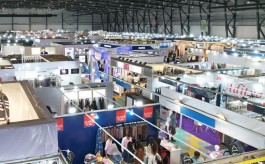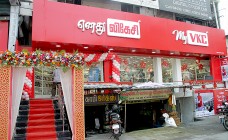Delhi-NCR high street retail segment sees a new high, says report
By Retail4Growth Bureau | April 16, 2025
Backed by strong tailwinds, the leasing activity in high streets and malls in the Delhi-National Capital Region has risen 57% year-on-year to 4.08 lakh square feet in the first quarter of 2025, according to data from global real estate consultancy Cushman & Wakefield.

According to data from global real estate consultancy Cushman & Wakefield, the Delhi-National Capital Region (NCR) is moving ahead with full gusto. Backed by strong tailwinds, the leasing activity in high streets and malls has risen 57% year-on-year to 4.08 lakh square feet in the first quarter of 2025, says the report. Much of it, it appears, is due to the aggressive expansion by fashion and food & beverage (F&B) brands.
“This isn’t just a rebound—it’s a structural shift. Brands are increasingly betting on physical stores in strategically located high-street projects to seek high growth. Emerging catchment areas such as Dwarka in New Delhi, Faridabad, and Greater Noida are witnessing increased traction. These areas have the capacity to support large-scale retail development due to growing population density, better connectivity, and rising income levels. As a result, leading national and global brands are pursuing aggressive expansion, which in turn is driving rental yields upward,” says Jatin Goel, Executive Director, Omaxe Group, Harpreet Singh Hora, Reach Group.
High Streets Dominate, Gurugram Leads Charge
As per the report, high-street locations accounted for 61% of the leasing activity, highlighting retailers’ preference for visibility and foot traffic due to their locations near residential hubs. However, it was Gurugram, accounting for 52% of total leasing, that emerged as the epicentre. It was followed closely by Noida and Delhi. The data also showed that satellite cities are no longer peripheral players when compared to Delhi. For example, rents in Galleria Market in Gurugram leapt 20% to Rs. 1,150–1,250 per sq ft—on par with Delhi’s elite shopping addresses—while Sector 29, an F&B hotspot, recorded a 13% rise. Noida’s Sector 18 remained stable at Rs. 200–225 per sq ft.
“Gurugram’s dominance isn’t accidental. Its expressway network and planned commercial hubs have created a ripple effect, drawing brands and investors alike. At the same time, despite competition from the upcoming Jewar Airport, Gurugram hasn't lost its sheen. Its high net-worth localities along with the strategic advantages offered by high-streets have ensured that the city's retail segment will continue to witness a steady rise,” says Uddhav Poddar, CMD, Bhumika Group.
Delhi’s Prime Markets Hit New Highs
In Delhi, Connaught Place solidified its lead position and witnessed rents climbing 14% YoY to Rs. 1,150–1,250 per sq ft. Khan Market, already among the world’s priciest retail destinations, saw a 7% increase to Rs. 1,600–1,650 per sq ft. However, at Kamla Nagar, a student den, the rents saw the priciest increase of 25% to Rs. 480–510 per sq ft. Delhi's other shopping hubs that made noteworthy increases include Greater Kailash-I’s M-Block (up 12%) and Lajpat Nagar (up 9%).
"One key takeaway from the remarkable rise in retail rentals is the sector’s strong potential to drive robust sales, translating into impressive returns on investment. For both shop owners and investors, this not only means a steady stream of income but also long-term price appreciation—provided the location is right. High-street projects in prime areas offer a winning combination of visibility, footfall, and future value. And this is just the beginning. With the sector poised for exponential growth, now is the time to invest and be part of retail’s next big leap," says Harpreet Singh Hora, Director, Reach Group.
"The main advantages of high-street are their size and accessibility. The ease of shopping and their location near dense residential clusters further enhanced their appeal. Their popularity is also driven by a unique retail mix tailor-made to the preferences of the region's demography. As a result, high-streets offer a strategic advantage for retailers enabling them to customise their product mix as per the area's demand," says Salil Kumar, Director, Marketing and Business Management, CRC Group.
As rents climb and vacancies shrink, investors are seizing what many call a “once-in-a-generation” opportunity. With infrastructure developments and consumer spending growing, indications are that Delhi-NCR’s high-street retail boom is here to stay.








